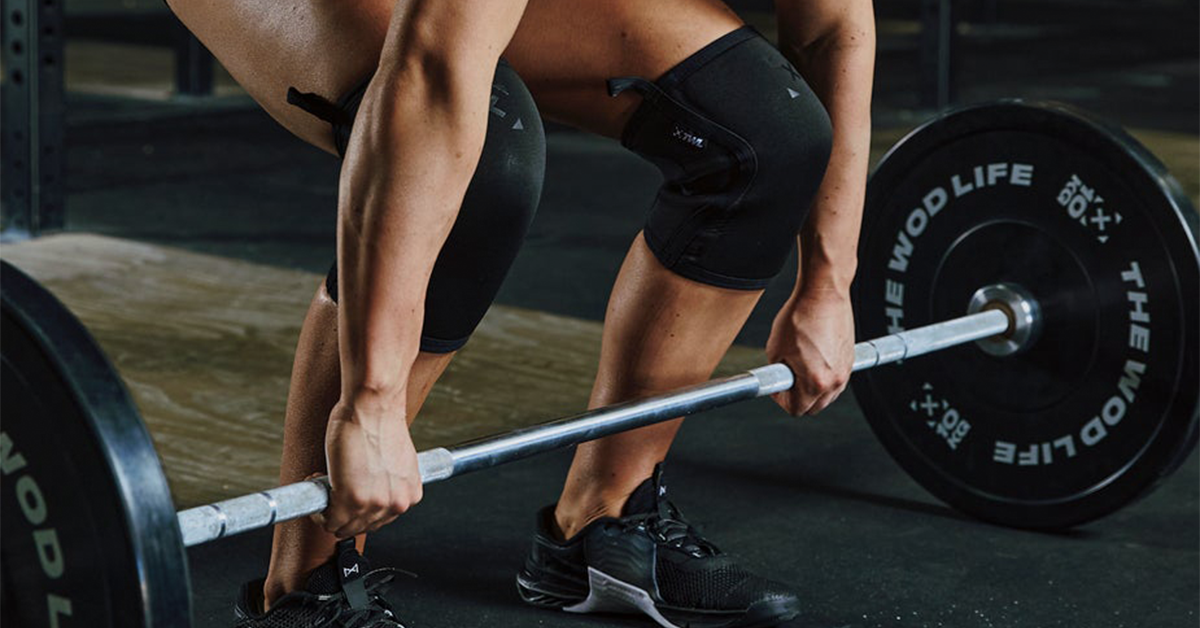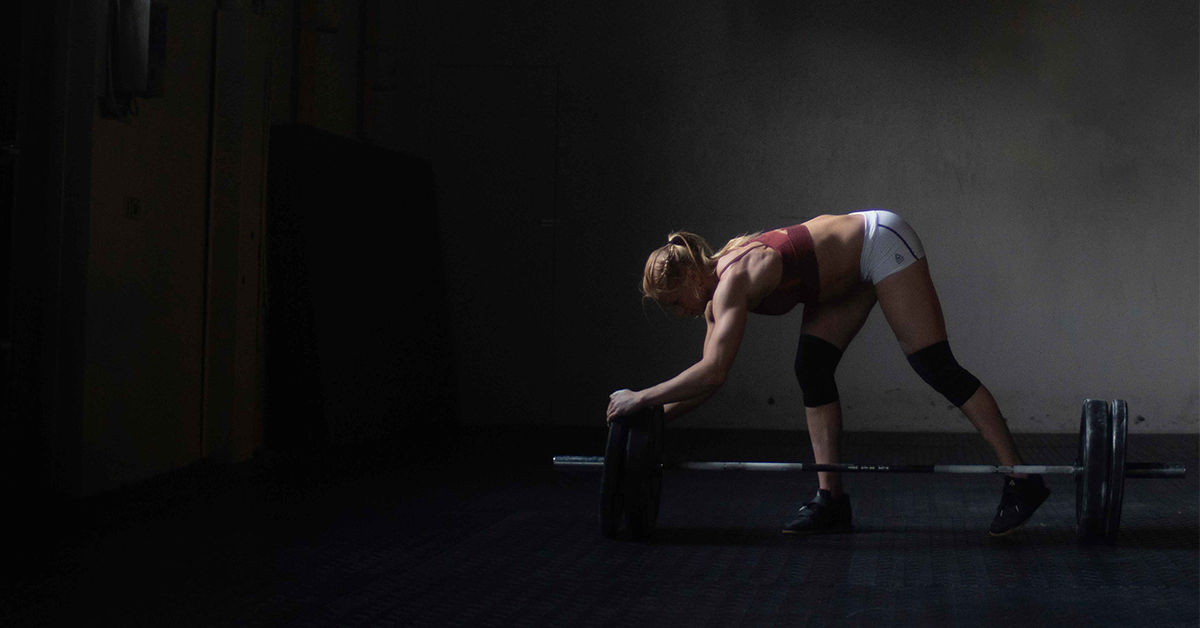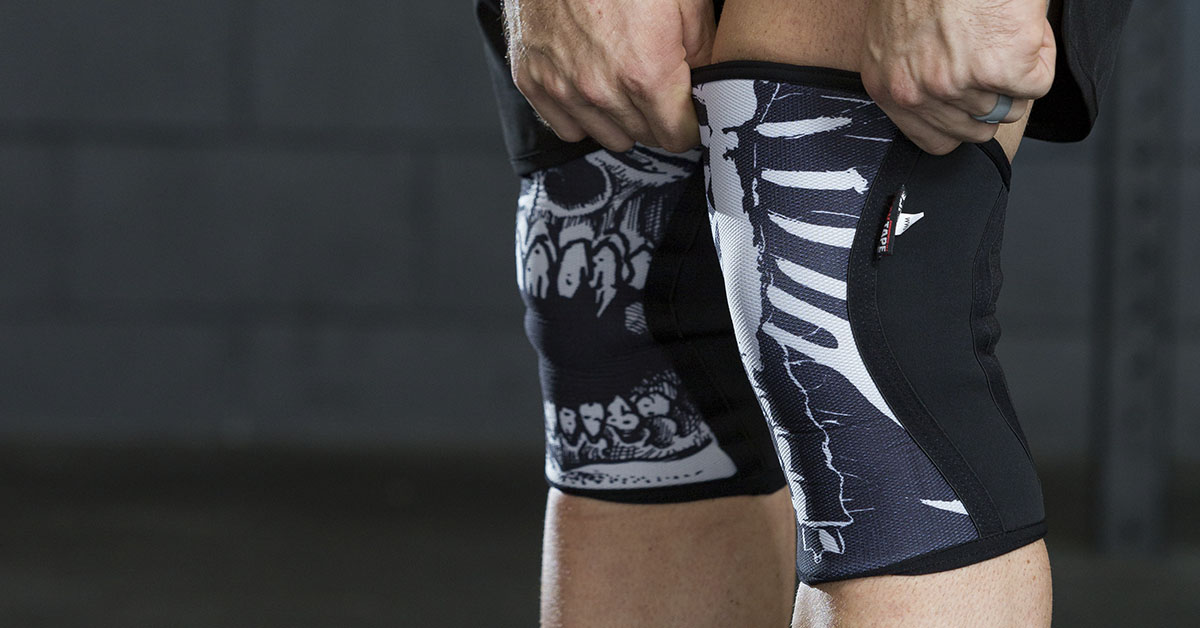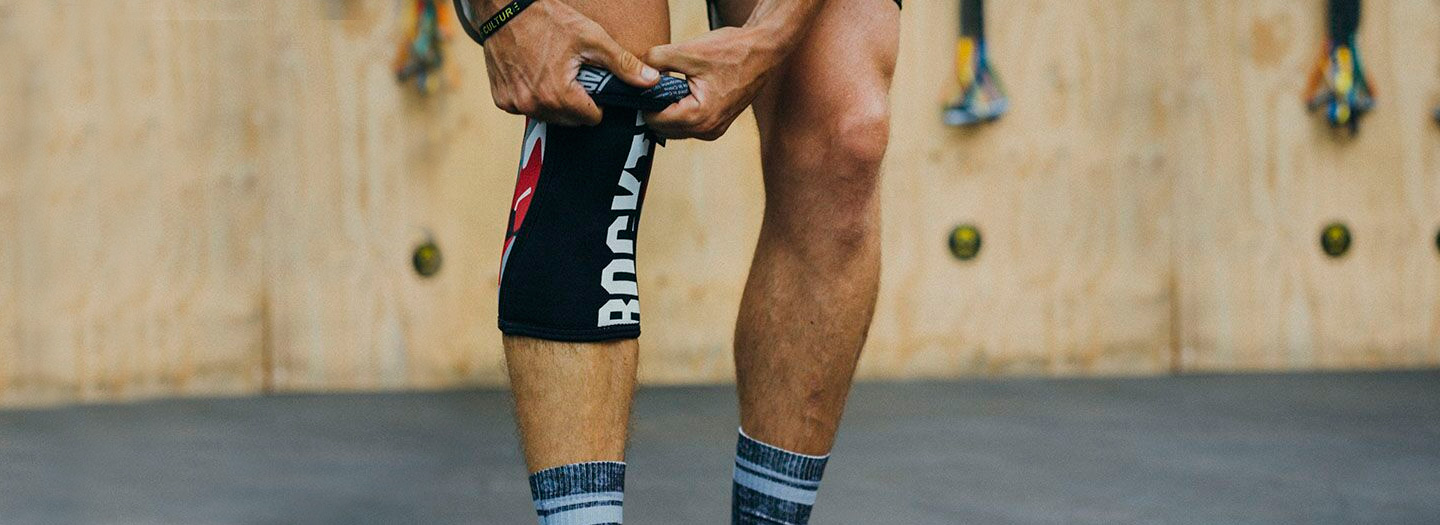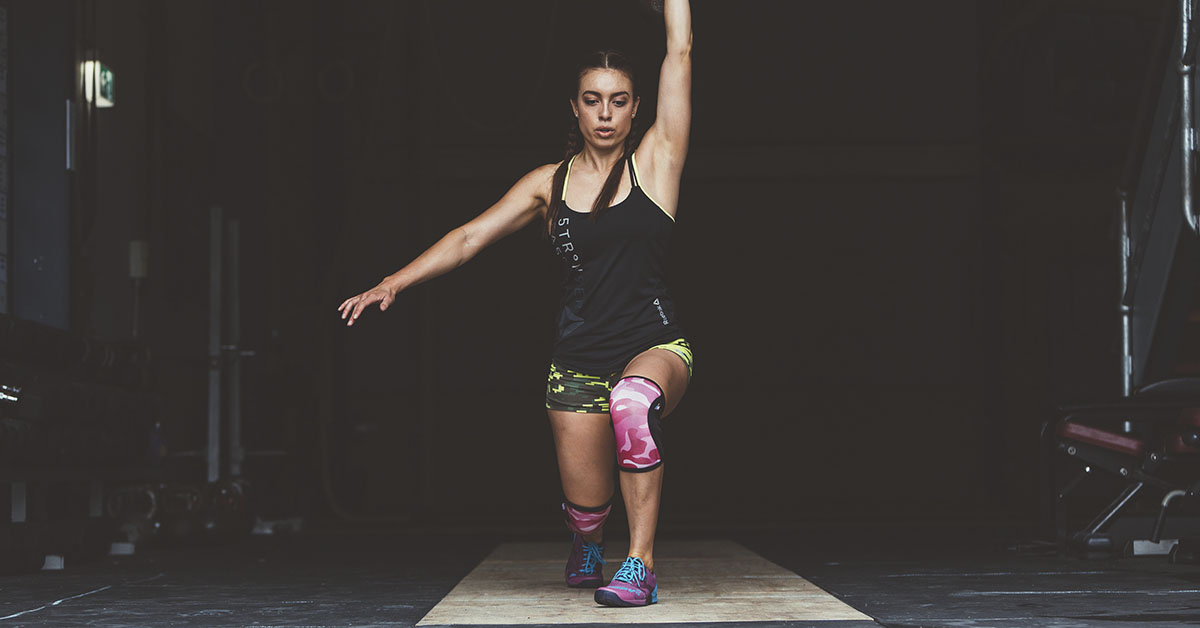There are various types of gear you can wear to provide extra support for your WOD or weightlifting session, like belts, wrist wraps, and knee sleeves. For weightlifting, many athletes love using knee sleeves for the numerous benefits they provide. They offer stability for the patella, as well as help to keep the knee joint warm.
Additionally, knee sleeves protect the knee from the risk of injury and damage, help reduce wear and tear, and provide much-needed compression — which increases blood flow, encourages recovery, and reduces pain. It’s no wonder, then, why so many athletes — from beginners to the pros — swear by them.
Knee sleeves come in different thicknesses. The lighter 3mm sleeves are good for athletes in endurance sports and training. 5mm sleeves are more general, appropriate for long-distance running, walking, gymnastics, and general gym use. They’ll work for training where both agility and support are required of the athlete and are more flexible than 7mm sleeves. 7mm sleeves are ideal for heavier activities since they’re tougher. These are the most common sleeves for any kind of weightlifting or Strongman/woman training.
While picking the correct thickness is fairly easy, finding the right size knee sleeve for you can be a bit tricky. Many people mistakingly think that if knee sleeves feel tight, they’re not the right size — when in actuality, they should be snug. How else can they give you the support and compression you need? Loose or baggy knee sleeves certainly won’t get the job done. On a similar note, though, they should never “pinch” or cut off your circulation.
Thankfully, there’s a specific way to measure yourself for knee sleeves.
When measuring yourself for knee sleeves, make sure your knee is slightly bent, as depicted below. Use this sizing guide as a reference.
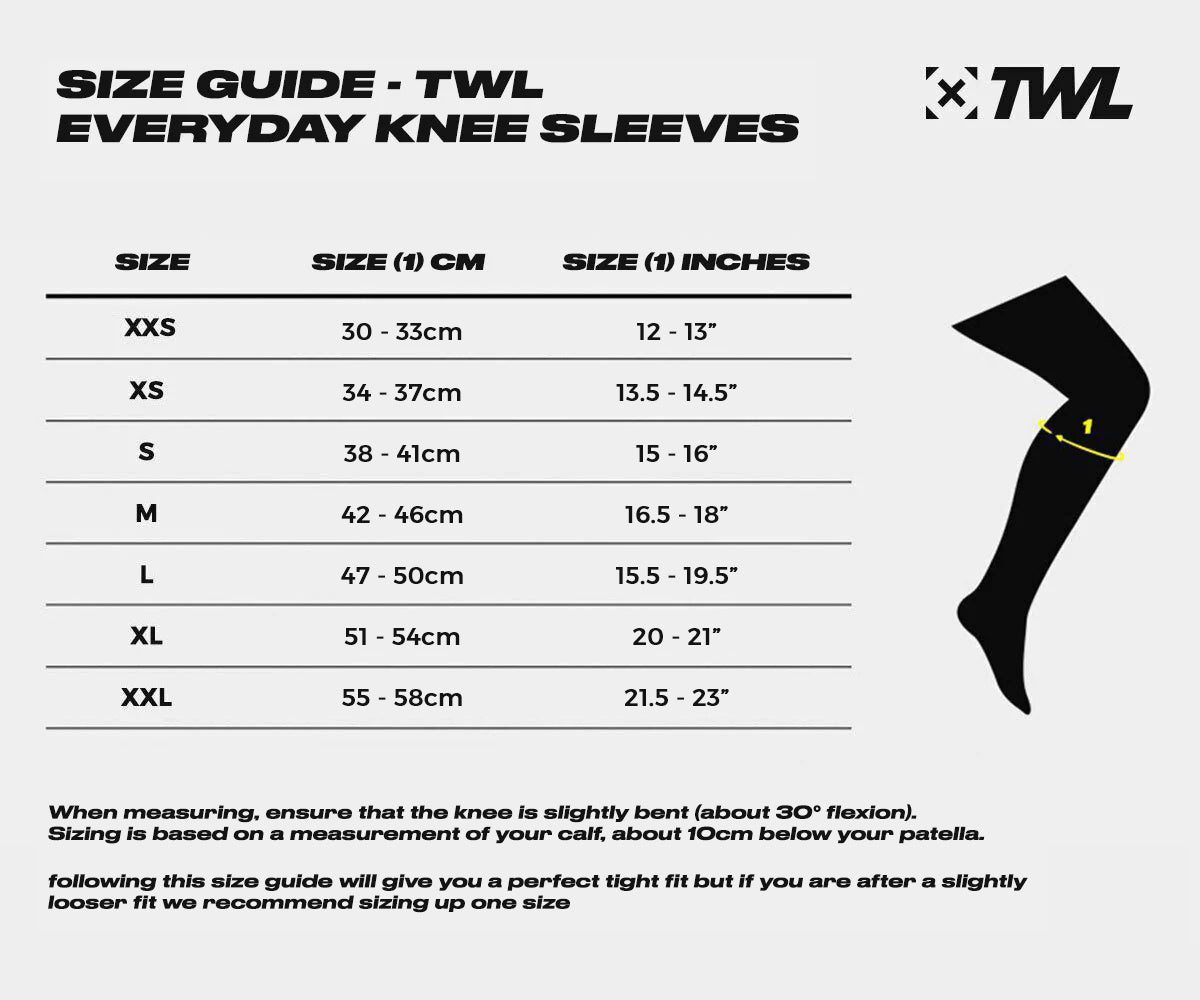
Here’s how you measure yourself for knee sleeves.
- Find the spot 10cm below your patella. (Need something to measure with? Try this printable TWL ruler.)
- Wrap a piece of string around this part of your calf.
- Using your handy TWL ruler, measure the length of the string.
- Use the above chart to match it with the appropriate size.
Helpful hint: If you’re caught in between two sizes — say, for example, your calf measures 35cm — a good rule of thumb is to go with the smaller size. When it comes to knee sleeves, tighter is commonly better.
When you find the right pair of knee sleeves for you, they’re going to become your greatest ally.
Ready to stock up? Check out our selection!

